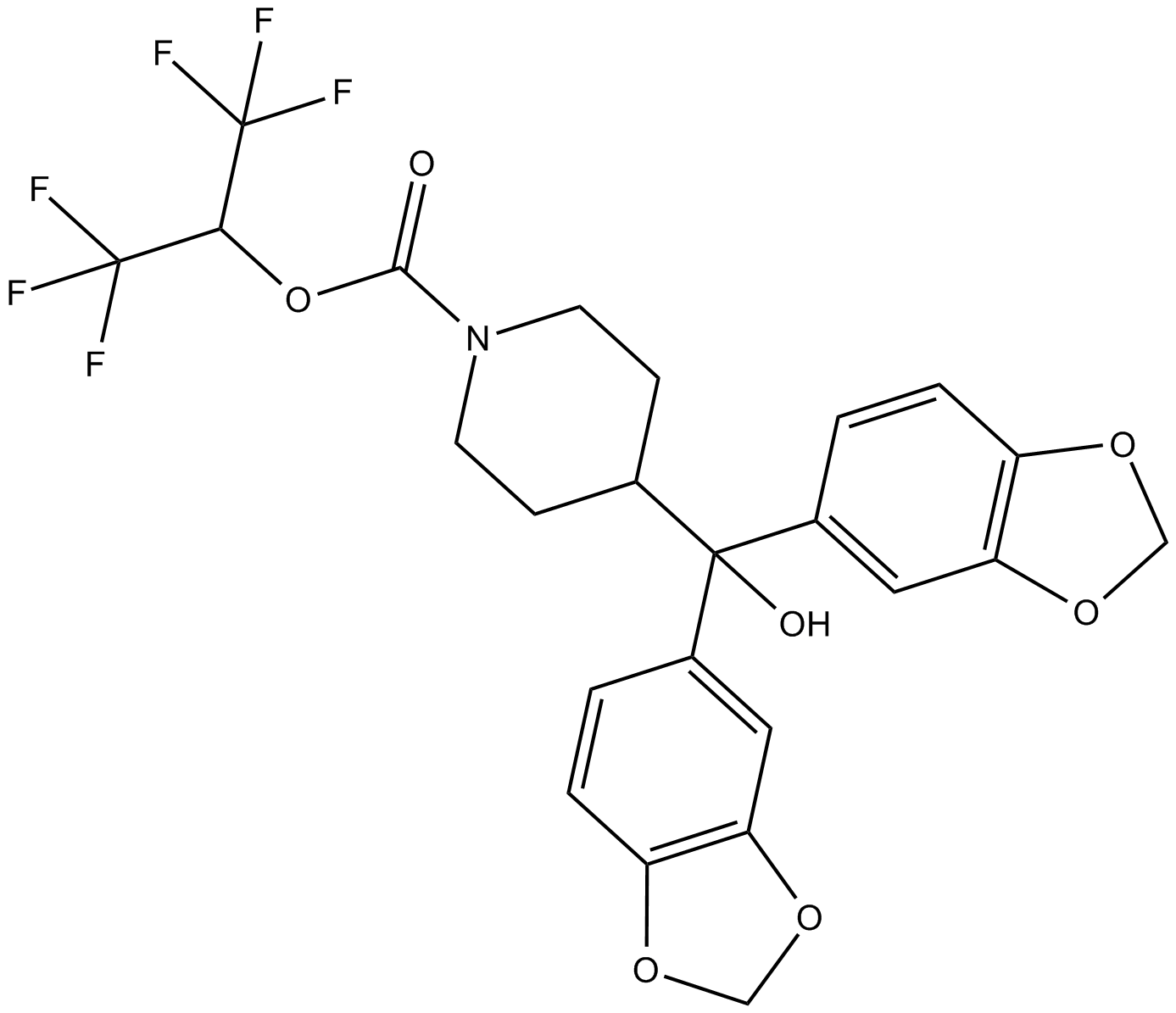KML 29 |
| Catalog No.GC17385 |
KML 29 is reported to display IC50 values of 43, 15, and 5.9 nM toward rat, mouse, and human monoacylglycerol lipase (MAGL), respectively.
Products are for research use only. Not for human use. We do not sell to patients.

Cas No.: 1380424-42-9
Sample solution is provided at 25 µL, 10mM.
KML 29 is reported to display IC50 values of 43, 15, and 5.9 nM toward rat, mouse, and human monoacylglycerol lipase (MAGL), respectively [1]. KML29 potently and selectively inhibited MAGL in vitro and in vivo with minimal cross-reactivity toward other central and peripheral serine hydrolases, including no detectable activity against FAAH [1].
KML 29 acted as a selective MAGL inhibitor showed antiproliferative activity against B16-F10 and HT-29 cells, while showed no significant effect on A431, H1975, OVCAR-3, HCC827, Hela and A549 cell lines [2].
KML 29 delays onset, progression and survival in the low-copy SOD1G93A Amyotrophic lateral sclerosis (ALS) mouse. oral administration of KML 29 is therapeutic by delaying onset, improving symptoms and extending lifespan, which was associated with increasing tissue levels of neurotrophic factors and decreasing pro-inflammatory cytokines [3]. Acute administration of KML 29 mostly increased 2-AG levels in fat, brain and spinal cord without any effect on AEA levels. KML 29 also reduced arachidonic acid levels in the CNS and peripheral organs [4].
References:
[1]. J.W. Chang, M.J. Niphakis, K.M. Lum, A.B. Cognetta 3rd, C. Wang, M.L. Matthews, S. Niessen, M.W. Buczynski, L.H. Parsons, B.F. Cravatt. Highly selective inhibitors of monoacylglycerol lipase bearing a reactive group that is bioisosteric with endocannabinoid substrates. Chem. Biol., 19 (2012), pp. 579-588
[2]. Deng H, Lei Q, Yang N, et al. Discover Monoacylglycerol Lipase Inhibitors by Combination of Fluorogenic Substrate Assay and Activity-Based Protein Profiling[J]. Frontiers in pharmacology, 2022: 3328.
[3]. N. Pasquarelli, M. Engelskirchen, J. Hanselmann, S. Endres, C. Porazik, H. Bayer, E. Buck, M. Karsak, P. Weydt, B. Ferger, A. Witting. Evaluation of monoacylglycerol lipase as a therapeutic target in a transgenic mouse model of ALS. Neuropharmacology, 124 (2017), pp. 157-169
[4]. N Pasquarelli, et al., Comparative biochemical characterization of the monoacylglycerol lipase inhibitor KML29 in brain, spinal cord, liver, spleen, fat and muscle tissue. Neuropharmacology 91, 148-156 (2015).
Average Rating: 5 (Based on Reviews and 10 reference(s) in Google Scholar.)
GLPBIO products are for RESEARCH USE ONLY. Please make sure your review or question is research based.
Required fields are marked with *




















